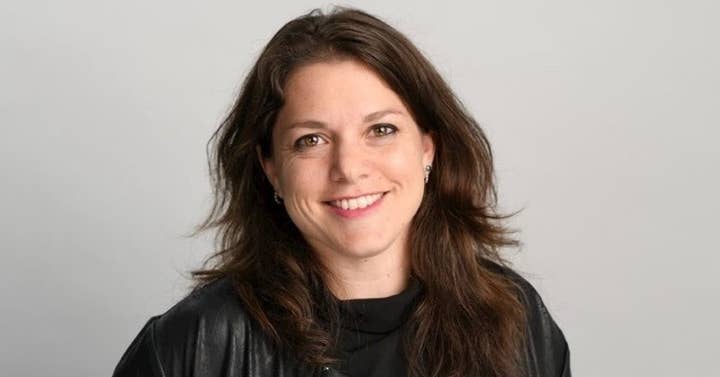Seven tips for running a $100 million user acquisition budget
SciPlay's CMO Noga Halperin goes through the principles that can make or break an app's UA results
App creators invest countless hours in perfecting every aspect of their game, fine-tuning the smallest details. They can't wait to release their creation and celebrate as millions of players download and enjoy it.
For that to actually happen, a world of strategy, creative thinking and solid analytics must take place in the process of User Acquisition (UA), which has become a true art form in this dynamic industry.
As the CMO of SciPlay, one of the largest social gaming companies in the market, I manage an annual marketing budget of over $100 million. After working with the industry's top talent on global campaigns and running thousands of campaigns on multiple platforms, I've discovered that the following principles will make or break an app's UA results.
Even though UA is a dynamic business and the gaming industry is constantly changing, these best practices will save an app's success from a devastating disappointment.
1. Know your goals and what they mean
Keeping your eye on the prize is always important, but it is absolutely crucial when managing a game's UA campaign. There's a huge difference between the strategy you'll choose for a newly launched game that is looking to form its initial user base, and that of a hit game that has been around for years primarily focused on acquiring players who are more likely to stay and play.
If you believe in finding a winning formula that remains the same no matter what game you're promoting, think again
The campaign's structure and time frame will be heavily influenced by the goals you're setting, which may include retention rates, DAU (Daily Active Users), CPI, the number of days it takes to break even, and more. It also heavily depends on the way you measure your ROI (more about ROI later on).
If you believe in finding a winning formula that remains the same no matter what game you're promoting, think again.
2. Match your creative assets to the platform
User acquisition pros are normally found analyzing Excel sheets, but it takes a surprising amount of creativity to build a great campaign. Matching the creative assets of a campaign -- the visuals, video, sound, and text of an ad -- to your platform of choice is critical.
First, different platforms have their own rules. On Facebook, for instance, an ad cannot feature more than 20% of text or it might get rejected or suffer from lower exposure. Google display ads, on the other hand, may not have a text limit, but they do include over ten different sizes and dimensions that your text and visuals must work with. Portrait format or horizontal ad? Different formats require different structuring to properly deliver the message and maximize the usage of your ad space. File size is also crucial for a faster loading time.
UA pros are normally found analyzing Excel sheets, but it takes creativity to build a great campaign
With any type of ad, we must always put ourselves in the viewer's shoes and address the state of mind our audience is in, which has everything to do with the platform they're using. Users scrolling through a fast-paced feed, as the one on Facebook or Instagram, are less likely to focus on content for long, whereas Google display ads are presented to users who are actively consuming content online (for example, when waiting for a video to begin) and are therefore more focused.
Also consider the ad's viewing experience. With 85% of Facebook users watching videos with the sound off, adding subtitles is critical and considering engaging visuals such as animated text is highly recommended.
Keeping your ad short enough to grab users' fleeting attention span is another challenge to keep in mind. Think 15 to 30 seconds. Facebook ads should be 15 seconds or fewer, use one- to two-second scene cuts, and feature the key message and company logo in the first three seconds.
YouTube videos can be longer and automatically include sound, but if they are skippable, you must include a strong opening or else viewers will skip the ad, and ultimately overlook your app. A common mistake is to assume that skippable ads are a huge compromise, but they actually cost less and act as a filter for irrelevant viewers. Non-skippable ads include CPM bidding (pay per impression), which will end up costing you more and might annoy users who aren't interested in your content.

In late 2017, Google AdWords' app install campaigns moved to Universal App Campaigns (UAC) and went through a transformation that included machine learning-based optimization capabilities. One result of this move was that campaigns were automatically and simultaneously launched on all of Google's channels, leaving app publishers unable to tailor the ad to fit the dedicated platform.
The creative process has basically changed from creating full Ads to creating various Ad Assets that "feed" the algorithm. We've discovered that to overcome this obstacle, we must create multiple ad assets for the same product, each one adapted to fit a specific platform, featuring different creative assets around the same concept. Google's algorithm did launch the ads on several different channels, but its optimization capabilities narrowed it down to the top performing ones based on the best practices we focused on in advance. It may take more work, but the increase in traffic is worth the effort.
3. Learn from trial and error
A great campaign doesn't have to be perfect right out of the gate. In fact, the best campaigns improve over time thanks to different procedures that are meant to study results and adapt accordingly. One example is A/B testing, in which we create multiple versions of the same campaign while changing certain elements to see which version will yield the best result. That's how we've learned that ads featuring people perform better, for instance.
A great campaign doesn't have to be perfect right out of the gate
Keep in mind that each industry has its own best practices, so what works for social gaming may not be the best choice for other fields.
It's important to keep in mind that this process is relevant for social media networks but not so much for Google, which performs an internal A/B testing process in which any interference is more likely to harm the end result.
4. The learning phase
Another example for the ongoing optimization process is based on the campaign's algorithm. Algorithms must lean on data and learn in order to improve, therefore the first 50 conversions of each Facebook campaign should be treated as the "learning phase."
Algorithms must lean on data and learn in order to improve
During this phase, the delivery system explores different ways for delivering impressions, which may result in a relatively high CPI. After 50 conversions, the performance is typically more stable and a higher share of budget can be spent. With Google App Campaigns, results also tend to improve over a longer period of time.
Don't let the high CPI scare you into shutting down the campaign -- the goal is to investigate and watch as the dust settles. After the first few dozen installs are achieved, we can adjust the campaign accordingly or, in some cases, shut it down and go back to the drawing board.
5. Include multiple events
The game and its campaign are inseparable. It's important to not only bring users to your game but also study their behavior once they've downloaded the app to see which in-game actions can predict more engaged players. That's why we implement different events within the game in order to track and analyze them over time.
Events include different actions taken by users, such as in-app purchases or level completion. We might learn that users who reached level 10 of the game in less than 24 hours are more likely to stay with us for the longer term, and then target new players who resemble these users and are labeled "lookalikes." App Event Optimization helps you make the most out of every campaign and promises to make your next campaign even better
6. Collaborate with external agencies
Collaborating with agencies is a smart move, even when you have a strong in-house UA team
Collaborating with agencies is a smart move, even when you have a strong in-house UA team. If you have a decent budget to work with, refrain from spending it all in-house and invest in growth and industry benchmarks.
In addition to backup and more working hands (and minds), you will be able to compare results and enjoy a fresh approach when it comes to your creative assets. There's always more to learn and great people to learn it from.
7. Focus on the right ROI
Most people in the industry know that you should measure and analyze results, but many still make the mistake of doing so too early in the process. The first week isn't the only time frame we want to focus on, and sometimes you need long-term results for long-term success.
Your CPI may be higher at first (remember the trial-and-error tip?) which might throw your overall analysis off balance, or it can start off slow and stop converting after a short while, depending on the campaign. After 30, 60, and 90 days, you'll know a lot more and be able to make smarter decisions. By running multiple campaigns and giving them a little bit of time, you may discover that campaigns with fewer conversions brought in high-quality users, making them a lot more effective than you had initially thought.
Don't rely on immediate results and short-term proxies. Long-term measurements will deliver stronger results. True campaign optimization is focused on predicted Return On Ad Spend (ROAS) and tries to assess the overall, long-term outcome based on the ad's current performance.
User acquisition combines so many parameters because people are complex. Finding the right users to play your game is no easy task. If you know you've built a great game, but it seems like you're the only one who enjoys it, go over the steps to see what you might be missing. User acquisition is one game you definitely don't want to lose.
Noga Halperin serves as the global chief marketing officer at SciPlay, providing creative and strategic leadership in the development of new marketing tools and channels for the social gaming company.
